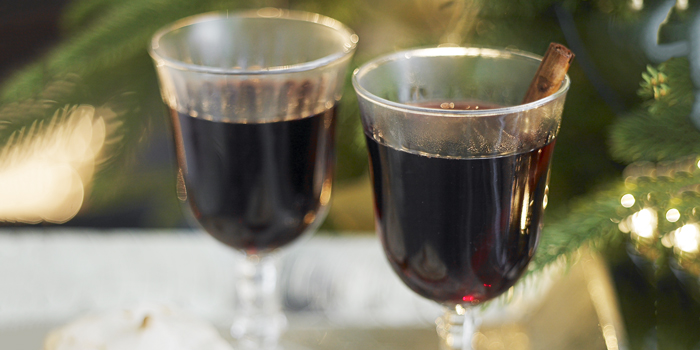
Pronounce it: mulld w-eye-n
Like ice-cold Spanish sangria, warm mulled wine is essentially red wine that is slightly sweetened, flavoured with citrus, lightly spiced and, usually, finished with a spirit or liqueur. However, mulled wine does not include cucumber or candied cherries.
The heat used in mulling encourages greater flavours from the citrus and the spices but also reduces the alcohol content, hence the common addition of a slug of spirit or liqueur just before serving. See below for some basic proportions.
You really can’t go that wrong, except you should never use ground spices and the wine should never boil and only gently simmer, or it will become ex-wine.
During the Christmas period some stores will sell ready-prepared mulled wine and these are generally improved by adding extra citrus and a flavoured spirit or liqueur.
Availability
Whenever it takes your fancy.
Choose the best
The worst things you can do are to use a lightly flavoured wine or a fine/expensive wine. Pick something robust – cheaper wines from Bulgaria, Hungary, Romania or Italy are often recommended.
Store it
Cold mulled wine may be strained and chilled, then reheated very gently in a microwave. Much better is to strain it and either freeze it to add to your next batch, or to set it into one large or many small jellies that will brighten up ice creams and are good topped with clotted cream.
Cook it
The standard proportions per bottle of red wine are sugar to taste, two oranges or equivalent of smaller citrus, one lemon, six whole cloves, one or two cinnamon sticks. After that, it’s up to you. Some stick rather more cloves into the oranges, which looks nice but doesn’t give optimum results. Better citric flavour results from thinly peeling the zest of the citrus, adding them and the juice to the wine and dropping in the cloves separately. Six or more lightly crushed cardamom pods add excellent taste and so do tiny cubes of preserved ginger. Elizabeth David added black peppercorns to her mixed spices, so you could try that along with blades of mace. A whole but split vanilla pod adds a velvety feel and flavour. Don’t even think about adding chillies.
The hot drink will multiply the sweetness of sugar, so err on the side of using less than you think. Brown sugars give a good extra dimension.
Simmer your mixture very gently for 10 – 20 minutes, keeping the lid on, and try to keep the mulled wine covered between servings. You can strain the wine but it’s better to pour very carefully.
Ainsley Harriott recommends mulling wines in a slow cooker and says two hours at low temperature gives excellent results and should retain most alcohol content.
Otherwise, combine about ¼ of the wine with the flavouring ingredients and either bring them to a gentle boil for five minutes or do the same in the microwave and then pour the warm, well-flavoured mixture into the rest of the bottle of wine, strained or not. This can then be heated only a little but will have the flavour of a wine that has simmered for ages and at least ¾ of the original alcohol content.
There are no rules about balancing out the alcohol lost through heat and if you are entertaining drivers, you may decide to add none. Cognac or brandy are traditional enhancers but black rum, cherry brandy, apricot brandy or any of the orange liqueurs all work well.
Be the first to comment on "Mulled wine"